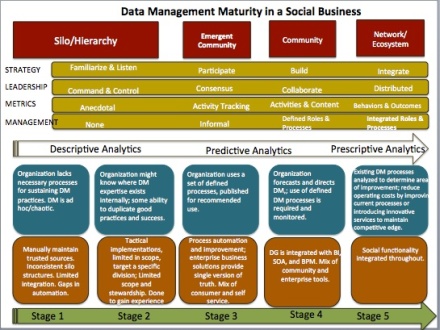I recently read a wonderful article by Daniel Isenberg in the Harvard Business Review article entitled “Planting Entrepreneurial Innovation in Inner Cities” (June 5, 2012). While on the surface it had nothing to do with data governance, it hit me as I got further in to it, that from an organizational perspective, there are many similarities between new and young data governance efforts and entrepreneurial ventures.
Many data governance efforts start out as entrepreneurial feats, engineered by a few people with a vision, creating it on a shoe-string budget. Perhaps they have an “angel” investor – an executive sponsor with enough vision to provide some capital and a few people to see what can happen. The goal of course, is to get enough wins (customers) under their belt to build a business plan and take it to an internal “venture capitalist” for full funding, more resources, and to support expansion. The data governance teams have similar qualities to entrepreneurs in terms of the amount of time, energy, creativity and dedication to their vision it takes to build the program out.
So, here is a synopsis of Isenberg’s major principles about fostering an environment of entrepreneurship. Think about how these can be applied in your organization.
Develop an inclusive vision of high growth entrepreneurship-, “It is a reality that a small number of extraordinary entrepreneurial successes have a disproportionately stimulating effect on the environment for entrepreneurship… But, counter this with a strong message to entrepreneurs that they need to play a role in community building. …you need to tirelessly communicate a coherent message to all of the stakeholders and residents, highlighting the entrepreneurial benefits…”
The application of this to your data governance effort is pretty straightforward. Find and nurture relationships with those who are most excited about the business value of data governance and can create the most impact. But, make sure they understand that they need to support and foster data governance through community building and sharing what they’ve learned with others. The big difference with data governance efforts versus entrepreneurship, is that as data governance efforts across an organization expand and mature, everyone should win, not just a few.
Use best processes, not best practices – “We are a ‘platform’ not a program. An ecosystem exists in nature when numerous species of flora and fauna interact in a dynamic, self-adjusting balancing act. You need to provide a broad platform to support the inclusive vision, for all to interact with each other in innovative ways. Best processes are more important than best practices. One element of “best process” in fostering entrepreneurship ecosystems is experimentation. Experiment. Test. Invent. “
Through collaboration and community-building efforts, data governance efforts continue to build out the platform and portfolio of best process language, products and services that enable the organization’s data ecosystem to thrive and innovate. And, don’t be afraid to try out new things and see if they work. Processes, standards, definitions, policies – these can all be tweaked over time if necessary.
Define principles, not clusters – “Innovation, creativity, design, sustainability, experimentation, entrepreneurship, inclusiveness: these are example principles to be infused into the city’s collective consciousness. It is the entrepreneur’s job, not City Hall’s or that of a consulting firm, to learn how to identify opportunity, usually where most people think it doesn’t exist. Many of the great opportunities defy definition and lie in the creative “inter-sectors”: health care and the environment; real estate development and information technology and cleantech; education and mobile communications.”
Classically, this is why data governance and data management are based on enterprise architecture and take an enterprise view of data. Trying to solve data issues in silos or divisions can move the ball forward – usually in terms of efficiencies. But to truly be innovative, connections and unlikely combinations across silos, divisions, and even ecosystems need to occur. Visibility into all enterprise data assets, identifying authoritative data sources, and providing high quality data: these are some examples of data governance principles that can support innovation in an organization.
Invest time, not money: “Nothing is free… [but]better to spend your energy persuading the stakeholders that it is worth their while to make those investments…investment is seen as enlightened self-interest.”
Yes, data governance and data management takes time AND money. But, the fact is that you do want all enterprise stakeholder invested in the outcome and success of the program – because they are dependent on quality data to succeed. If they all chip in and have a stake in the game, they will be more interested in helping you succeed.
Fight the battle for talent, not capital: “Make your city an amazing place for the most talented entrepreneurs, innovators and creative people to come to seek their fortunes, to live, work, and play in.”
Data governance isn’t exactly a city, but the concepts of community-building still apply. Set up internal communities using social media to allow folks to come together virtually and share ideas. Spend time trumpeting successes and encouraging the cross-pollination of ideas. Set up your program so it enables success and innovation in the organization by tying it in with key strategic initiatives that have employees talking.
One final point. Isenberg article specifically discussed entrepreneurship in inner cities. He described “Inner city” in this way – “remember just a decade ago when the term ‘inner city’ basically meant ‘dead city’, conjuring up images of destruction, dereliction and despair? Today, inner cities are “in” – innovative, hip hotbeds of convenient culture, commerce and connection.”
Sounds a lot like the world of data to me.


